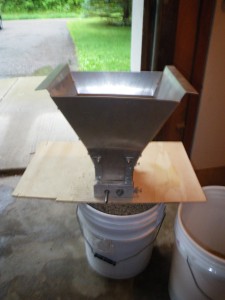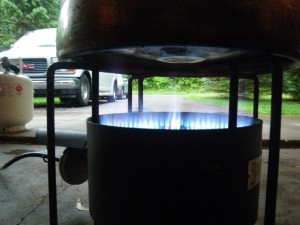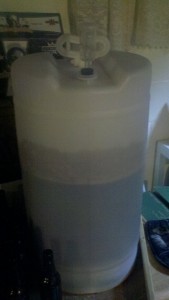I started this article series earlier. Read: Part 1, Part 2 and Part 3
Bottling Day
Here’s where our paths diverge to see if there is a difference in kegging vs bottling. Unfortunately, I forgot to take some pictures of the process.
Andy and I met at his house on a Thursday evening after work. I was dreading the task of bottling because it always seems to take all available time plus, at least an hour. Someday, I’ll post a story about the relational dangers of homebrewing and thinking, “This will only take about an hour.” All I can say is, “Don’t. Just don’t go down that road of thinking.”
Anyway, I got to Andy’s about 6:15 and as I started unloading my bench capper, bottles, bottling bucket, sanitizer, etc(bottling big batches of beer takes a lot of equipment), Andy was running water for a batch of sanitizer. He had his keg prepped and we got everything in place. I carried the beer from his basement upstairs to his kitchen. After placing the fermenter on his serving freezer, we realized the critical error I just made: I placed 110 pounds on top of all the beer available to drink. Oh well, it ain’t moving till we’re done.
We sanitized Andy’s keg and started racking the beer into it. We were a little too frantic on brew day to truly appreciate the benefits of using half-inch siphoning equipment. It goes a lot faster than standard 5/16-inch. I swear, it took about 2 minutes to fill Andy’s keg.
Once we got the keg taken care of, we sanitized our bottles and boiled a batch of priming liquid. We wound up with about six gallons of beer, so we used a little extra DME for priming.
With two of us working, Andy filled the bottles and I capped. I’m not sure exactly how long the bottling took, but it didn’t take nearly as long as I expected. This probably took about a half hour.
Cleanup probably took about twenty minutes. We just rinsed stuff out and I finished my normal cleaning regiment when I got home. I probably spent another 20 minutes making sure all my equipment was cleaned and sanitized before putting it away.
I was expecting the process to take at least 3 hours, since that seems to be about how much time I spend bottling five gallons. 10 gallons usually takes me about 4 hours for cleaning & sanitizing, bottling and clean-up. As I said earlier, I got to Andy’s about 6:15 PM. at 7:45, I was calling my wife to let her know I was on my way home. I even got to tuck my kids in to bed.
If you have friends who like to help drink your homebrew, I highly recommend convincing one of them to help you bottle. It’s not a lot of fun, but it’s much more enjoyable and more efficient with a helper.
Now, we’re just waiting for the bottles and the keg to carbonate. I’ll post an update with our tasting notes when that happens. It might be a few weeks.



